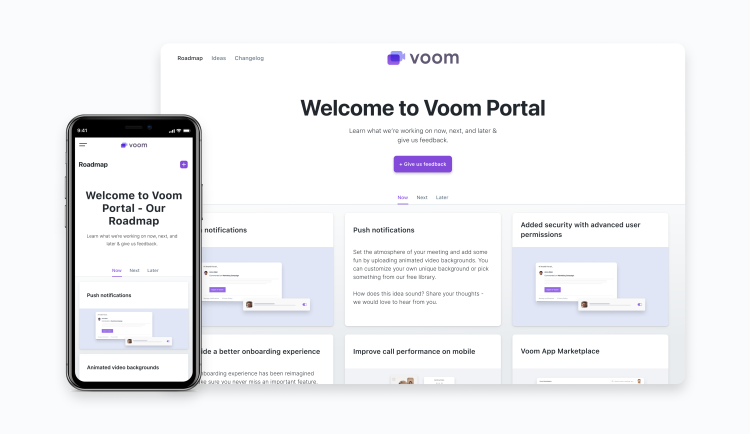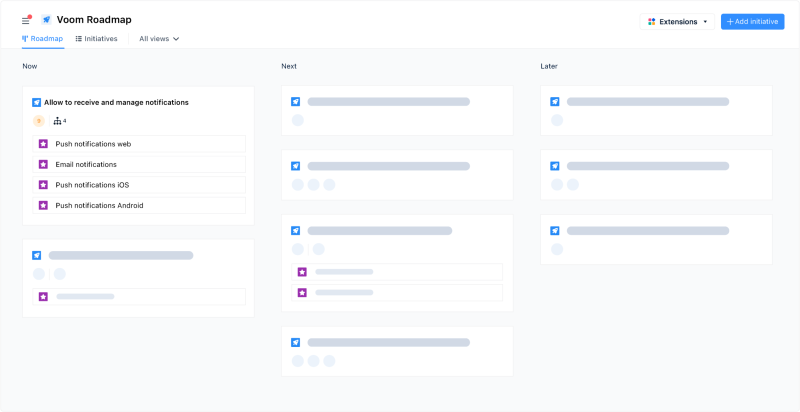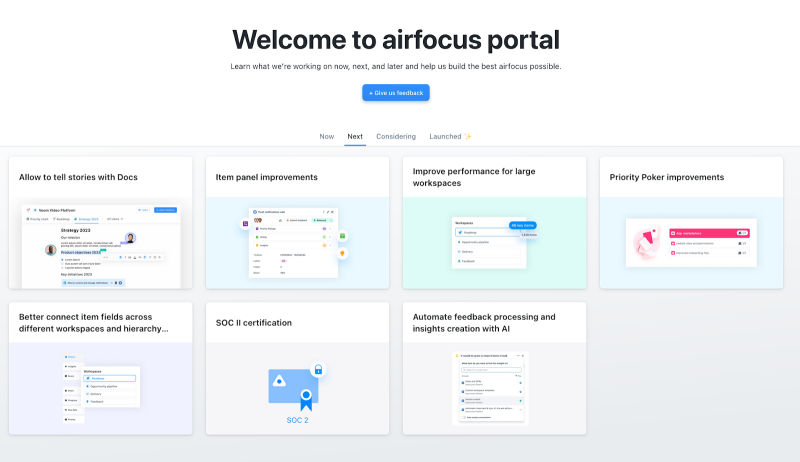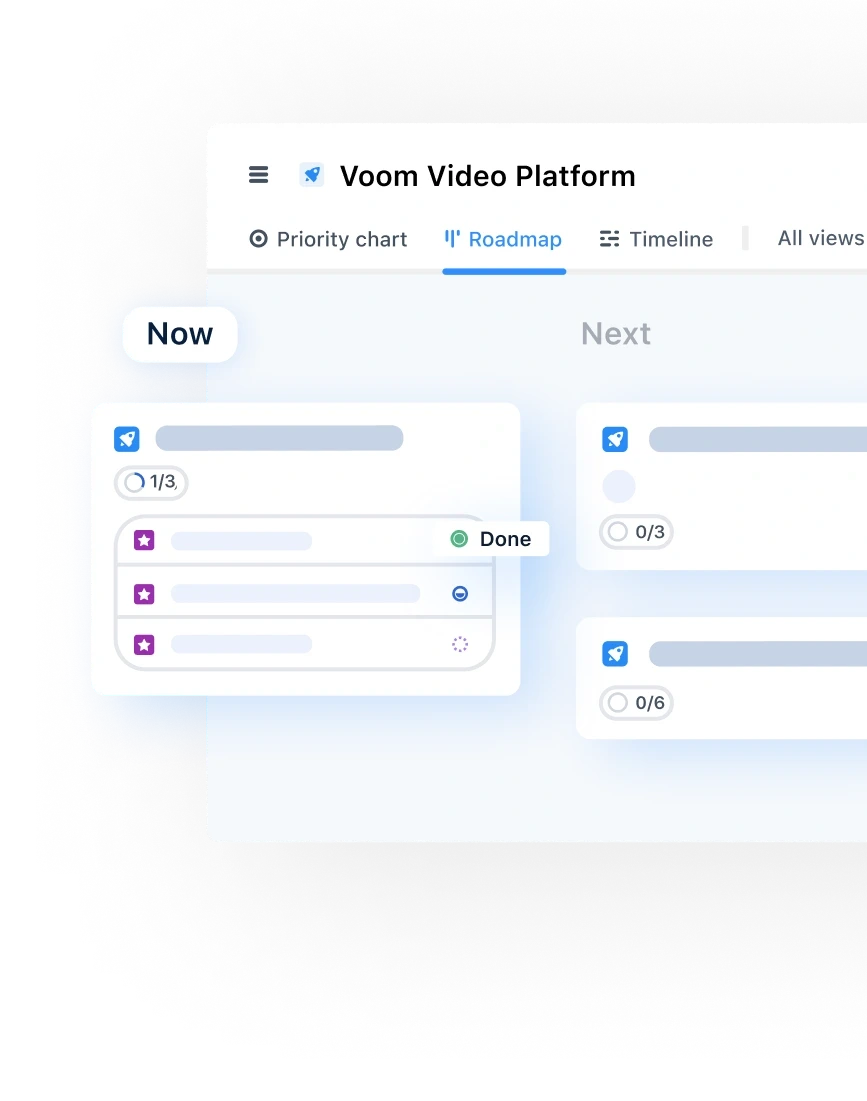
Today I want to discuss a topic that sends shivers down the spines of many SaaS company executives: public-facing roadmaps.
Yes, you heard me right. I said it. Public. Facing. Roadmaps.
Now, before you run for the hills, let me assure you: this is not the end of days. In fact, it might just be the beginning of a beautiful new era. Public roadmaps aren’t about showing off trade secrets – they’re really about positioning your team, and your product, and building relationships and trust with your customers. If you don’t have one yet, hopefully, I’ll be able to shine a little insight into what you’re missing out on.
The fear factor: Debunking myths about public-facing roadmaps
Many SaaS companies are terrified of public-facing roadmaps. They imagine all sorts of horrors: competitors stealing their ideas, customers rioting when features are delayed, the sky falling... you get the picture.
But here's the thing: these fears are largely unfounded. Sure, there's a risk that a competitor might see your roadmap and get some ideas. But guess what? They're probably already doing that. All it takes is starting a free trial or talking to your sales team pretending to be a customer (trust me, I’ve done it) This is all just natural competitive intelligence gathering.
If your roadmap is positioned properly, you shouldn’t be fearing anyone looking at it. This means not giving away specific features, but rather talking about potential problems you are considering solving. Your roadmap, if anything, should look like a list of questions, not a list of answers. How you answer those questions should be unique to your product and context, focusing on the specific value you bring to your audience.
Afraid they might go to market first? Guess what, that also doesn’t matter. Going to market first doesn’t guarantee success – that has been proven over and over again. Product success is a combination of solid product research, smart execution, and creative go-to-market. If you can manage to balance all three, then who looks at your roadmap shouldn’t make a difference. If anything, it can even give you the power to make others afraid of what you can achieve.

Defining a public-facing roadmap
So what exactly is a public-facing roadmap? In its simplest form, it's a high-level view of your product's direction and intention. It's not a promise, it's not a detailed plan, and it's certainly not a magic 8-ball that can predict the future (though wouldn't that be nice?)
I like to work with a Now, Next, Later approach, giving insight into what is in development now, what questions we are looking to answer next, and which ones are potentially within scope. Not only will this arm your business-facing teams with the ability to have better conversations and set proper expectations with leads and customers, but you can also use your roadmap as a product marketing tool.
Many still focus on positioning the features they’re building or going to build, but what many don’t think about is being able to show off what they have already built. There is a column in the Now, Next, Later roadmap that often goes unmentioned - the “outcomes” column. This is the space where you can talk about what you did, what you achieved, and what you’ve learned. If used properly, you can use this as a track record for what you have delivered, giving insight into the past, present, and future.

Benefits of a public-facing roadmap
Let’s look at the benefits of a public-facing roadmap a bit more closely. We've got three big hitters here: transparency, engagement, and trust.
Let's break these down and see why they're so crucial:
Transparency
Customers are no longer satisfied with just using a product; they want to understand the 'why' and the 'how' behind it. They crave a peek behind the curtain, a glimpse into the inner workings of the products they use and love. And that's where a public-facing roadmap comes in.
A public-facing roadmap is like a window into your world. It shows your customers not just what you're working on, but why you're working on it. It gives them insight into your decision-making process, your priorities, and your vision for the future.
And even if you think that’s not it, remember that there are organizations likely depending on your product to be able to do their job. The least you can do is be honest about the general direction you’re moving in so they can prepare themselves.
Caveat: I do want to add a caveat here. When I say “prepare themselves” I do not mean you should explicitly be talking about features. What I do mean is that if they’re expecting a particular feature and you don’t plan on building it, be honest about what you are planning instead, and what problems you’re looking at for the future. Don’t hold on to a customer if they aren’t right for you (and if you’re not right for them.)
Engagement
Next up, we have engagement. A public-facing roadmap can make your customers feel like they're part of the journey, right here, right now. They can see the progress you're making, the challenges you're facing, and the victories you're celebrating. And this can make them feel more connected to your product and your company.
As I said before, roadmaps can be a great product marketing piece, and an even better community engagement piece. Share it often, have webinars around it, and make sure you’re keeping connected to your audience.

Trust
Last but certainly not least, we have trust. Trust is the foundation of any strong relationship, and it's no different when it comes to the relationship between a SaaS company and its customers.
By sharing your roadmap, you're showing your customers that you trust them. You're saying you value their input and want them to be part of the journey. But it's not just about showing that you trust your customers; it's also about proving that they can trust you. A public-facing roadmap can show that you're committed to your product, that you're constantly iterating and looking to solve problems, and that you're not afraid to be open about your learnings along the way.
Best practices for creating a public-facing roadmap
I have written about this extensively in the past, but i’ll try to give you a quick TLDR on this:
Focus on outcomes, not features: Your roadmap should be about the problems you're trying to solve, not the specific features you're planning to build. This gives you flexibility and keeps the focus on value.
Be transparent, but don't overpromise: It's important to be honest about what you're working on, but don't make promises you can't keep. Remember, your roadmap is a guide, not a contract.
Update regularly: Your roadmap isn't a set-it-and-forget-it document. It should evolve as your product and market do. Regular updates show that you're active and responsive.
Drop the timeline: Do everyone a favour and step away from timelines. Timelines are about execution, this particular conversation is about direction. Can you have both? Absolutely, but be clear about what the outcome of the conversation is before you jump in.
The Proof: Case studies of successful public-facing roadmaps
Still not convinced? Let's look at a couple of real-life product management case studies of SaaS companies that have successfully implemented public-facing roadmaps.
Buffer

First up, we have Buffer, a social media management platform. They've been sharing their product roadmap publicly for years. They use Trello to showcase what they're currently working on, what's up next, and what's in the discussion phase. This transparency has helped them build trust with their users and keep them engaged with the product's development.
Now this isn’t your typical Now, Next, Later roadmap - but they’ve done a great job and keeping things transparent and engaging.
airfocus

Last but not least we have airfocus. The team has combined the idea of a public-facing roadmap with that of a customer portal, allowing customers to give direct feedback around each initiative the team is considering – and also those they have released. Each initiative also has a description and image alongside it, giving more context around each item displayed.
This is a fantastic and unique play, gathering feedback for items past and present and creating an engaging environment for everyone.
Conclusion
The case for public-facing roadmaps is strong. They promote transparency, boost customer engagement, and build trust. Plus, they give you a fantastic opportunity to show off your product strategy (and marketing!) chops.
Now, I'm not saying you should rush out and publish your roadmap tomorrow. Like all good things, a great public-facing roadmap takes time and thought to create. But I am saying that it's worth considering. Because in the world of SaaS, transparency isn't just a nice-to-have; it's becoming a must-have. It is time to be brave and be bold: share those product roadmaps already!

Andrea Saez

Read also



Build great roadmaps

Experience the new way of doing product management



